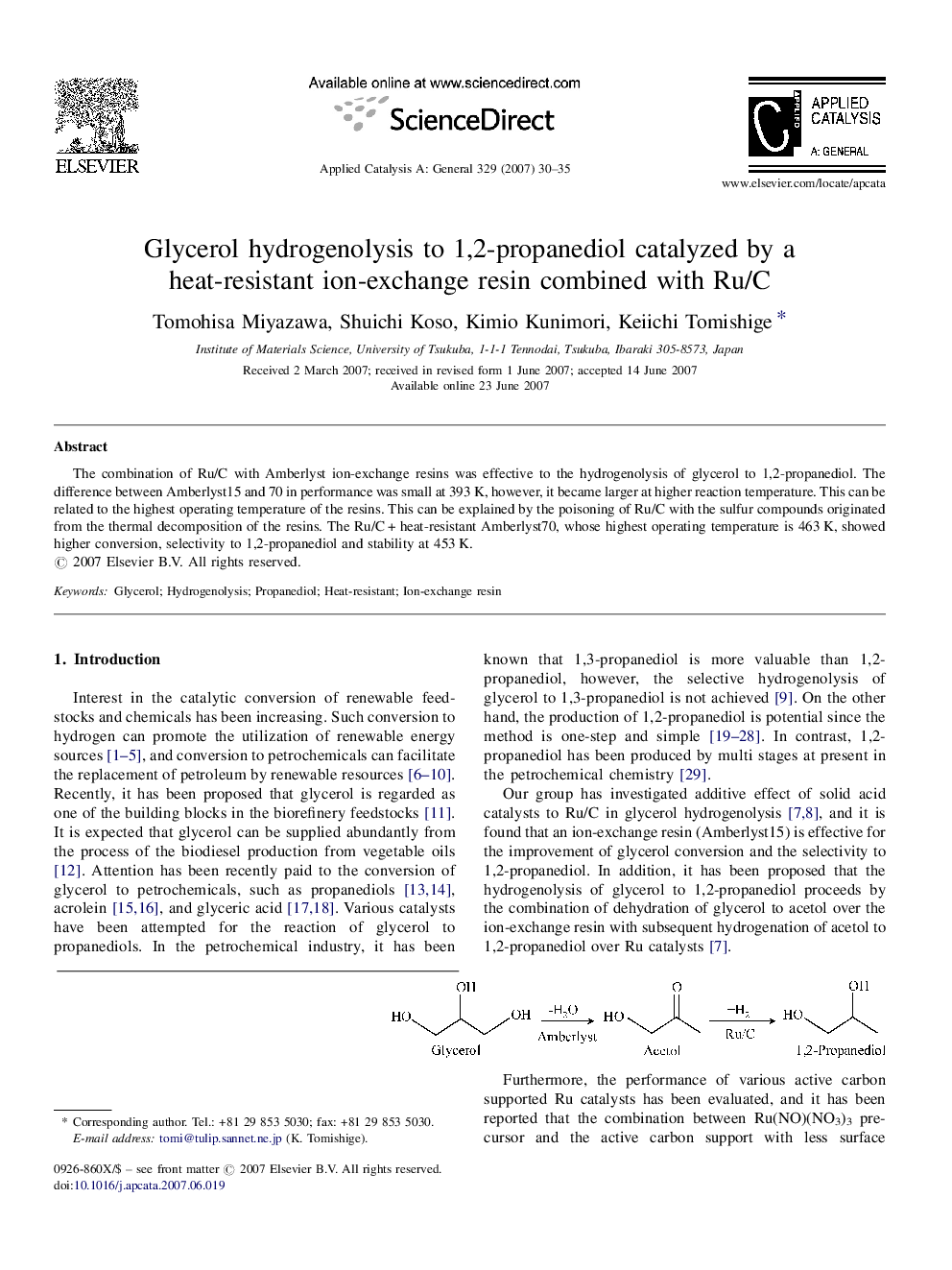| Article ID | Journal | Published Year | Pages | File Type |
|---|---|---|---|---|
| 44097 | Applied Catalysis A: General | 2007 | 6 Pages |
The combination of Ru/C with Amberlyst ion-exchange resins was effective to the hydrogenolysis of glycerol to 1,2-propanediol. The difference between Amberlyst15 and 70 in performance was small at 393 K, however, it became larger at higher reaction temperature. This can be related to the highest operating temperature of the resins. This can be explained by the poisoning of Ru/C with the sulfur compounds originated from the thermal decomposition of the resins. The Ru/C + heat-resistant Amberlyst70, whose highest operating temperature is 463 K, showed higher conversion, selectivity to 1,2-propanediol and stability at 453 K.
Graphical abstractThe difference between Amberlyst15 and 70 combined with Ru/C in the glycerol hydrogenolysis became larger at higher reaction temperature. This can be explained by the poisoning of Ru/C with the sulfur compounds originated from the thermal decomposition of the resins. The heat-resistant Amberlyst70 + Ru/C showed higher conversion, selectivity to 1,2-propanediol, and stability at 453 K.Figure optionsDownload full-size imageDownload as PowerPoint slide
